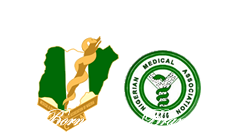|
MOLECULAR AND CONVENTIONAL METHODS OF DETECTING RESPIRATORY VIRUSES AMONG CHILDREN WITH LOWER RESPIRATORY TRACT INFECTION IN SOKOTO, NIGERIA |
|
| Shuaibu A. Hudu, Nabil S. Hamal | |
|
Background: Most infections of respiratory tract are caused by viruses but bacteria with viruses contributing to a higher proportion of infection.
Objectives: The aim of the study was to assess the epidemiology of respiratory viral infections among children less than five years of age hospitalized with acute lower respiratory tract infections (ALRTIs) at Specialist Hospital, Sokoto using conventional and molecular detection methods. Methods: The cross-sectional study was designed to investigate the occurrence of respiratory viruses including (RSV), human Metapneumovirus (HMPV), influenza virus A and B (IFV-A and B), parainfluenza virus 1, 2, 3 and 4 (PIV 1, 2, 3 and 4), human rhinoviruses (HRV), human enterovirus (EV), human coronaviruses (HCoV) 229E and OC43, human Boca virus (HBoV) and human adenovirus (HAdV) among hospitalized children with acute lower respiratory tract infections (ALRTIs), at Specialist Hospital, Sokoto, from June 16 to December 21, 2010. The present study was also designed in part to assess the performance of the conventional methods against molecular methods. Results: Etiologic agents were detected in 158 (95.8%) of the patients. Single virus was detected in 114 (67.9%) patients; 46 (27.9%) were co-infected with different viruses including double-virus infections in 37 (22.4%) and triple-virus infections in 9 (5.5%) ca;ses. RSV (50.3%), with predominance of group B, played a major role. Other etiological agents including HAdV, HMPV, IFV-A, PIV 1-3, HBoV, HCoVOC43 and EV were detected in 14.5, 9.6, 9.1, 4.8, 3.6, 2.4 and 1.8 percent of the samples, respectively. Conclusion: Our results demonstrated the potential usefulness of molecular detection methods compared with conventional methods for the diagnosis of ARTIs among hospitalized children. This is the first report of HMPV, HBoV and HRV infections among hospitalized children in Sokoto.
|
|

